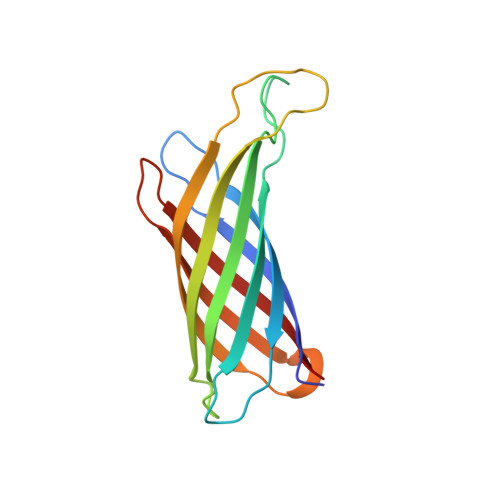Optimized phospholipid bilayer nanodiscs facilitate high-resolution structure determination of membrane proteins.
Hagn, F., Etzkorn, M., Raschle, T., Wagner, G.(2013) J Am Chem Soc 135: 1919-1925
- PubMed: 23294159
- DOI: https://doi.org/10.1021/ja310901f
- Primary Citation of Related Structures:
2M06, 2M07 - PubMed Abstract:
Structural studies of membrane proteins are still hampered by difficulties of finding appropriate membrane-mimicking media that maintain protein structure and function. Phospholipid nanodiscs seem promising to overcome the intrinsic problems of detergent-containing environments. While nanodiscs can offer a near-native environment, the large particle size complicates their routine use in the structural analysis of membrane proteins by solution NMR. Here, we introduce nanodiscs assembled from shorter ApoA-I protein variants that are of markedly smaller diameter and show that the resulting discs provide critical improvements for the structure determination of membrane proteins by NMR. Using the bacterial outer-membrane protein OmpX as an example, we demonstrate that the combination of small nanodisc size, high deuteration levels of protein and lipids, and the use of advanced non-uniform NMR sampling methods enable the NMR resonance assignment as well as the high-resolution structure determination of polytopic membrane proteins in a detergent-free, near-native lipid bilayer setting. By applying this method to bacteriorhodopsin, we show that our smaller nanodiscs can also be beneficial for the structural characterization of the important class of seven-transmembrane helical proteins. Our set of engineered nanodiscs of subsequently smaller diameters can be used to screen for optimal NMR spectral quality for small to medium-sized membrane proteins while still providing a functional environment. In addition to their key improvements for de novo structure determination, due to their smaller size these nanodiscs enable the investigation of interactions between membrane proteins and their (soluble) partner proteins, unbiased by the presence of detergents that might disrupt biologically relevant interactions.
Organizational Affiliation:
Department of Biological Chemistry and Molecular Pharmacology, Harvard Medical School, 240 Longwood Avenue, Boston, Massachusetts 02115, United States.














